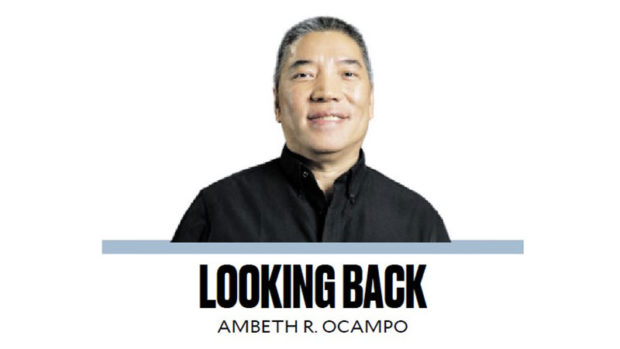While traveling along Roxas Boulevard, passing by notable landmarks such as the Magsaysay Center, the Laurel Library, an empty lot earmarked for the Roxas Center, and a statue of President Elpidio Quirino, a thought crossed my mind. When will we have our own presidential libraries here in the Philippines? The task of tracking down scattered primary source documents across various repositories can be quite burdensome. That’s why I find it fascinating that in 1955, the United States Congress passed the Presidential Libraries Act. This act aimed to preserve the papers, memorabilia, and other materials related to US presidents and their administrations. These libraries serve as valuable resources for research, enjoyment, and even inspiration. And the best part is that the primary source materials in these libraries are made available to the public “without regard to political affiliations or considerations” because they “belong to the American people.”
Since the passing of the Presidential Libraries Act, a total of 15 presidential libraries have been established, covering the terms of Herbert Hoover, Franklin D. Roosevelt, Harry S. Truman, Dwight D. Eisenhower, John F. Kennedy, Lyndon B. Johnson, Richard Nixon, Gerald Ford, Jimmy Carter, Ronald Reagan, George H. W. Bush, Bill Clinton, George W. Bush, Barack Obama, and Donald Trump. Personally, I have only had the chance to explore the Ford Library in Michigan. During my visit, I came across a unique souvenir—a medallion featuring the profiles of Imelda Marcos and Betty Ford, commemorating their visit to Manila in December 1975. The helpful archivist provided me with a list of all Philippine-related materials available. While I believe my research in the other presidential libraries will be fruitful, I must admit that postwar US presidents aren’t my area of expertise.
Last year, I wrote a column about the personal diaries of Reagan, specifically those entries that covered the final days of Ferdinand Marcos Sr. in 1986. Recently, as I revisited the website, I discovered a detailed day-to-day record of Reagan’s eight years as president. It turns out that the White House had a designated “presidential diarist” whose job was to create a daily log. This log contained everything from the president’s breakfast activities to his interactions and meetings throughout the day, up until bedtime. The log provided complete transparency, listing everyone Reagan met or spoke to, attendees of meetings, social events, and more. However, I noticed that there were some missing entries, particularly when Reagan was in Camp David, his California ranch, or away from Washington. The log abruptly stopped in October 1988 because the diarist “fell behind in compiling it.” To fill in the gaps, the presidential library stepped in.
But the real treasure trove comes from Reagan’s personal diary. It provides even more detailed insights. For instance, the log simply noted that Reagan met with Jaime Cardinal Sin of the Philippines at the Waldorf Astoria Hotel in September 1984. However, Reagan’s personal diary entry revealed that Cardinal Sin was determined to persuade Marcos to step down. Similarly, the log mentioned a meeting between Reagan, US Ambassador to the Philippines Stephen Bosworth, and two NSC officers in February 1985. Reagan’s personal entry shed light on the situation, mentioning Marcos’ ill health and his limited working hours due to kidney problems, which were kept hidden by Imelda Marcos.
It’s safe to say that the book “Reagan Diaries” edited by Douglas Brinkley and published in 2007 is just scratching the surface. A visit to the Reagan Library would likely yield a wealth of once-classified documents, photographs, and even audio and video recordings. Take, for example, Reagan’s entry from September 16, 1982, after hosting a state dinner for Ferdinand Marcos. Reagan wrote, “I think they will go home reassured and confident of our friendship.” This personal friendship continued even after Marcos was deposed in 1986, and Reagan was forced to work with Corazon Aquino. In April 1986, Reagan expressed his frustration in seeking another country to take Marcos into exile. Despite this, he still maintained diplomacy and reached out to Aquino before contacting Marcos. Their hour-long meeting in the Oval Office left Reagan feeling reassured and happy, just like his sentiment after the 1982 Marcos visit. These diaries clearly demonstrate that at the presidential level, personal friendships may change, but permanent interests remain.
Comments and discussions surrounding this topic are welcome at [email protected].
Subscription successful!
Read Next: Don’t miss out on the latest news and information. Subscribe to INQUIRER PLUS to get access to The Philippine Daily Inquirer and over 70 other titles. With your subscription, you can share access with up to 5 gadgets, listen to the news, and download articles as early as 4am. You can also easily share articles on social media. Call 896 6000.
Denial of responsibility! Vigour Times is an automatic aggregator of Global media. In each content, the hyperlink to the primary source is specified. All trademarks belong to their rightful owners, and all materials to their authors. For any complaint, please reach us at – [email protected]. We will take necessary action within 24 hours.


